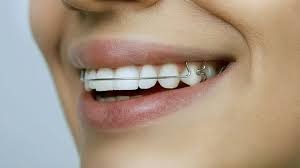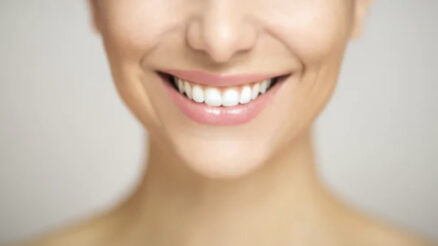Crooked teeth are not merely an aesthetic concern; many people experience difficulty in biting, chewing, or speaking clearly when their teeth are significantly out of alignment. At the same time, the idea of wearing traditional metal braces is off-putting for some individuals who do not want a noticeable appliance fixed to their teeth for months or even years. This is where the discreet innovations of modern dentistry come in, presenting alternative ways to achieve a straighter smile without resorting to conventional braces. For those looking into potential solutions, consulting a cosmetic dentist London is often one of the first steps, since these professionals can provide insight into the full range of treatment options designed to correct misalignment.
According to cosmetic dentist, Dr. Sahil Patel of Marylebone Smile Clinic, many adults with crooked teeth discover they can benefit from Invisalign. “This approach uses a series of removable plastic aligners that guide the teeth into improved positions, without the need for brackets or wires,” explains Dr. Patel. He advises patients to consider whether they can commit to wearing the aligners for the recommended daily period, usually around 22 hours, but emphasises that these transparent trays can straighten teeth just as effectively as standard braces for mild to moderate misalignment cases.
Why Alternatives to Traditional Braces Are Popular
Understanding why alternatives to braces are gaining popularity requires examining the challenges that come with traditional orthodontic methods. Metal braces, though reliable and time-tested, are generally considered more noticeable, require consistent tightening appointments, and can present oral hygiene challenges because of the wires and brackets involved. For many teenagers and adults who lead busy lifestyles or feel self-conscious about wearing braces in social and professional settings, the allure of “invisible” or minimally visible corrective treatments is strong. Dentists and patients have therefore turned to systems designed to offer a more discreet path to a straighter smile.
The development of clear aligners is one of the most significant technological leaps in this area. These aligners are custom-fitted, meaning each set is made to move particular teeth at different stages, progressing in small increments. Most individuals receive multiple sets of aligners, which they change on a schedule provided by their dental professional. Over time, minor adjustments gradually transform the alignment of the teeth without the sort of abrupt tightening commonly associated with metal braces. For many people, this results in a more comfortable process and fewer emergencies related to broken wires or brackets. The ability to remove aligners when eating or brushing also makes daily tasks simpler and helps reduce the risk of stains or trapped food debris.
Invisalign and Clear Aligners
However, clear aligners are only one of several solutions for fixing crooked teeth without braces. Treatments such as dental veneers or composite bonding can often address aesthetic concerns effectively, though the suitability of these methods depends on the individual. Some individuals have minor spacing or alignment issues that can be masked by placing thin porcelain shells over the front surfaces of their teeth. Others might benefit from slight reshaping or bonding techniques to improve the illusion of alignment. While these options will not move the teeth per se, they can dramatically transform the appearance of someone’s smile in fewer appointments than clear aligners or braces would require. Dentists typically evaluate the underlying bite, gum health, and tooth structure before recommending cosmetic measures, making it vital for patients to seek a professional assessment before deciding on a course of treatment.
In determining the right path, one must consider how the health of the jaw and gums might be affected by misaligned teeth. Teeth that do not line up properly can place uneven stress on the surrounding bone and soft tissues. Over time, this can lead to issues ranging from mild gum irritation to temporomandibular joint (TMJ) discomfort. In certain cases, making an aesthetic change without addressing the functional problem might worsen existing complications. An honest evaluation by a qualified dental professional ensures that any recommended solution not only enhances the look of the teeth but also supports healthy function. This is especially important if a patient is looking to reduce the risk of future dental problems.
Exploring Cosmetic Dentistry Options
Visiting a clinic that specialises in cosmetic procedures ensures the patient receives in-depth information about how a particular method might affect both the appearance and function of their teeth. Moreover, a cosmetic dentist London can help manage the expectations that come with each type of treatment. While veneers may quickly mask misalignment, they do not alter the position of the natural teeth. Clear aligners, on the other hand, physically move the teeth into better alignment, but the process takes time and discipline. Potential side effects, cost, and maintenance obligations must all factor into the decision-making process.
Another aspect to consider is the patient’s lifestyle. Treatments like aligners require ongoing maintenance and care. The trays must be cleaned regularly and protected from damage when removed. For frequent travellers or people with hectic schedules, it is worth checking how often in-person appointments will be necessary. Usually, aligner systems entail check-ins every six to eight weeks to monitor progress and receive new sets of aligners. Although many providers now offer virtual check-ins, at least some in-person visits tend to be necessary to ensure the teeth are moving as anticipated. In contrast, veneers, once placed, require no additional series of appointments beyond general routine check-ups. Still, they are permanent in the sense that enamel is usually removed to place them, so the decision should not be taken lightly.
Some patients combine treatments for optimal results. For instance, if the misalignment is moderate and accompanied by discolouration, the dentist might recommend aligners to straighten the teeth first, followed by whitening to correct the shade. Once the teeth are in their ideal positions, a small gap or chip might remain that could be fixed with bonding. This tailored approach ensures each issue is handled systematically, rather than attempting a one-size-fits-all solution. However, it is essential to consider that every additional procedure has a cost, and these can accumulate. Insurance often covers some portion of treatment, particularly if there is a functional need. Nonetheless, cosmetic procedures may not always be fully included under typical dental plans, so budgeting is a key element of the planning process.
Considering Lingual Braces
The evolution of orthodontics and cosmetic dentistry has allowed more people to consider treatment later in life. It used to be common for individuals to assume they had missed their window if they did not undergo braces in their teenage years. Today, adults in their 30s, 40s, 50s, and beyond are increasingly turning to treatments like clear aligners or veneers to correct alignment issues that were never addressed or that arose over time due to shifting teeth. These methods can be especially appealing to adults who want a more subtle option than the metal brackets often associated with adolescence. It is also worth noting that addressing alignment problems earlier rather than later can help prevent more complex issues from developing, such as uneven wear or gum recession caused by improper biting forces.
Long-term maintenance is another factor in choosing an appropriate treatment. For clear aligners, patients typically wear a retainer at night once active treatment ends, preventing the teeth from drifting back to their previous positions. The same applies to patients who have had traditional braces. With veneers, maintaining them involves good oral hygiene, careful brushing, regular check-ups, and avoidance of habits like nail-biting that could damage the porcelain. If composite bonding has been used, the material may require touch-ups over the years to keep it looking fresh, and avoiding stain-inducing substances can help prolong its brightness. All these responsibilities remain key components of preserving a healthy, confident smile after the initial cosmetic or orthodontic treatment is complete.
While non-braces options are abundant, there are limits to what they can correct. Some severe bite issues, such as a significant overbite, underbite, or crossbite, might still necessitate a more traditional orthodontic approach or even surgery in extreme cases. The advantage of a detailed consultation with a qualified professional is that patients are less likely to waste time or money on a solution unsuited to their specific problem. This is another reason for the thorough examination and planning process that reputable cosmetic dentists follow. They need to ensure the solution is not just appealing aesthetically but also conducive to ongoing oral health.
Those who do not require extensive realignment might be especially interested in how minimal-prep veneers or invisible aligner options can quickly deliver a straighter-looking smile. However, minimal-prep veneers work best for people who already have a generally favourable bite and only minor concerns about shape and spacing. In all instances, the emphasis on a natural-looking outcome cannot be overstated. Whether an individual chooses aligners, veneers, or bonding, a top priority is preserving harmony with the rest of the face. A smile that appears overdone or mismatched in colour is often a giveaway that something unnatural was done. Skilled cosmetic dentists invest time in colour matching, shaping, and ensuring the result complements the patient’s facial proportions.
Anxiety about dental procedures is common, so it can help to discuss any worries upfront. Many clinics offer sedation or relaxation techniques for individuals who feel uneasy about the thought of multiple appointments. Clear aligner check-ups are usually quite brief, involving an assessment of progress and distribution of the next set of aligners, which can make the process feel less intimidating compared to the tightening appointments required for metal braces. Veneer and bonding procedures are also relatively comfortable, though a local anaesthetic is often administered during the preparation stage. If fear is a significant barrier to seeking treatment, discussing sedation options or step-by-step guidelines with the dentist can alleviate some of these concerns.
READ MORE : How Grace Charis’ Age Shaped Her Social Media Fame
Planning for Long-term Dental Health
The psychological and social benefits of having a smile that aligns with one’s self-image are well-documented. People may feel more confident in professional environments, more relaxed when taking photographs, or simply more satisfied day-to-day. It is not always about seeking perfection; for some, small tweaks that enhance symmetry or address a single overlapping tooth can make a significant difference in how they perceive themselves. Importantly, the primary goal should always be oral health, ensuring that the chosen solution does not compromise the function or durability of the teeth in the long run. By maintaining a holistic outlook—considering gums, jaw joints, dental function, and aesthetics—patients can expect a treatment that supports not only their smile’s appearance but also its long-term health.
In summarising the journey toward straighter teeth without braces, it is clear there is no single solution that suits everyone. Clear aligners are an excellent option for those seeking to move their teeth gradually and discreetly, provided they can commit to wearing the trays diligently. Veneers or bonding might be suitable for individuals whose primary concern is cosmetic, involving subtle misalignment or uneven spacing, and who prefer a faster transformation. Lingual braces offer a hidden version of conventional braces, though they require skill to apply and maintain. A thorough, individualised examination is always recommended, ensuring the chosen method addresses not only the cosmetic goals but also any underlying functional issues.
Ultimately, the rise in popularity of orthodontic alternatives underscores a shift in how people view dental treatments. It is no longer only about fixing function while sacrificing aesthetics for a lengthy period. Instead, modern solutions aim to integrate seamlessly into a patient’s daily life, delivering both form and function with minimal inconvenience. This reflects an evolving ethos within dentistry, one that places as much importance on patient comfort and confidence as on clinical results. With careful planning, diligent care, and realistic expectations, it is entirely possible to fix crooked teeth without wearing traditional braces, opening the door to a comfortable, confident smile for years to come.





